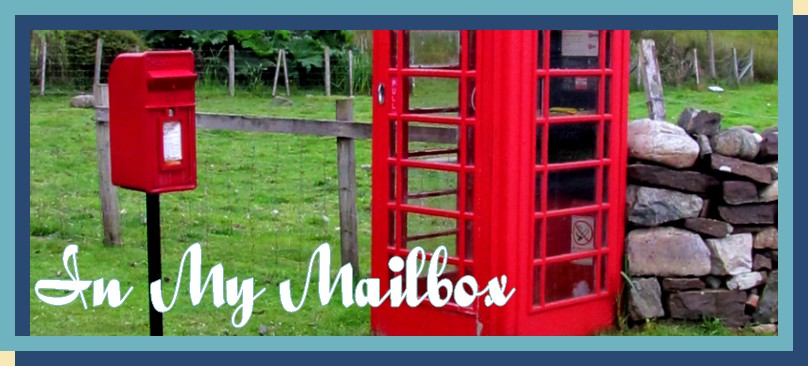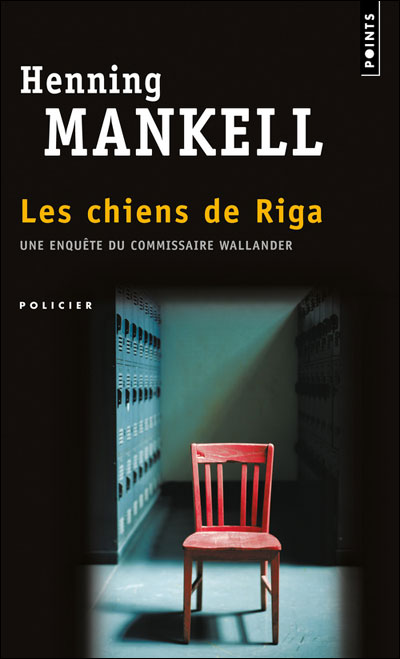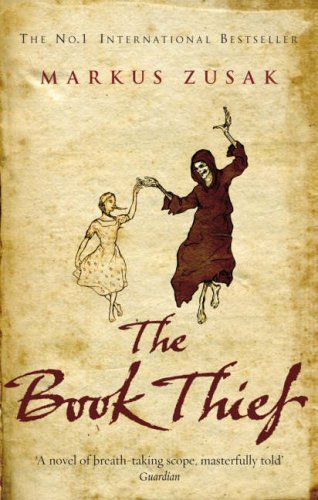-

Auteur : Julia Bell
Titre original : Massive (anglais)
Traducteur : Emanuelle PingaultDate de publication : 2002 (traduction française: 2004)Editions : Milan (Macadam)
* Ventre : Là, je dois m'arrêter pour le faire rentrer d'un coup de poing. Il dépasse trop, il fait masse, il me donne l'air d'être enceinte. Il devrait être plat.*"- Si j'étais aussi grosse qu'elle, je me tuerais, dit Maman en montrant du doigt une photo de Marilyn Monroe dans son magazine.
Je suis dans la cuisine, en train de faire griller du pain. Maman n'achète que du pain danois, à faible teneur en sel, le genre qui contient plus d'air que de farine. Son nouveau régime l'autorise à en manger deux tranches au petit déjeuner.
- Tu me préviendrais, hein, si j'étais grosse comme ça?
Je me tourne vers elle, je vois ses os à travers ses vêtements. Je mens :
- Evidemment.
Le poids a toujours été un sujet épineux pour Carmen. Rien de surprenant : sa propre mère lui répète comme une litanie qu'être mince, c'est être belle ; c'est réussir dans la vie ; c'est obtenir tout ce que l'on veut... Alors, c'est simple : Carmen sera mince. Quel qu'en soit le prix.XXL, un titre qui en dit long sur le thème principal du roman. Mise en scène dans notre société actuelle où l’apparence est de plus en plus importante, l’histoire est racontée par Carmen, une adolescente qui se cherche. Perdue dans un tourbillon de situations difficiles, entre la séparation de ses « parents », son déménagement dans une ville qu’elle ne connaît pas et les problèmes de poids de sa mère, obsédée par les régimes, elle va décider de changer son apparence, espérant que cette transformation résoudra tous ses problèmes…
Aujourd’hui, l’anorexie touche de plus en plus de personnes en raison de la minceur « idéale » vantée dans toutes les sortes de publicité imaginables. Il est donc normal que de nombreux romans se penchent sur ce problème. Destiné aux jeunes, XXL est cependant bien différent de tous les ouvrages parlant des problèmes de poids et d’anorexie que j’ai pu lire auparavant.
En effet, si on se rend vite compte que Maria, la mère de Carmen, est obsédée par son apparence et ses régimes, le problème de l’anorexie ne fait véritablement son apparition qu’après la moitié de l’histoire. Il est bien sûr présent auparavant, mais il faut savoir lire entre les lignes pour le déchiffrer. Ce n’est qu’après un enchaînement de mauvaises expériences que Carmen, qui adore la nourriture grasse venant du McDonald’s et les sucreries, décide de se mettre sérieusement au régime… et bascule dans la spirale infernale.
Ce passage se fait imperceptiblement, de manière presque naturelle. Par la suite, Julia Bell nous fera bien comprendre de quoi il s’agit, mais contrairement à bien des auteurs, j’ai trouvé qu’elle restait particulièrement objective, évitant de prendre parti ou de nous influencer.
Comme souvent, l’anorexie n’est pas un problème isolé. Dès le début de l’histoire, on comprend la situation difficile de Carmen, tant du point de vue familial que parce qu’elle est en pleine adolescence, période où elle recherche son identité. Si elle parait tout d’abord indécise, plutôt prête à suivre les autres t à obéir qu’à prendre des décisions et tracer son propre chemin, elle subira bien vite d’intéressants changements, tant du point de vue de sa maturité que du côté physique.
Carmen étant la narratrice, c’est elle que l’on connaît le mieux. On rencontre donc les autres personnages par son regard et les expériences qu’elle fait. Il est donc normal qu’ils soient moins détaillés qu’elle, mais j’ai tout de même trouvé qu’ils étaient quelque peu caricaturaux : la grand-mère qui regarde la télé tout la journée en s’empiffrant, le grand-père qui passe son temps au pub, la mère obsédée par son poids et son apparence, le père qui donne de la nourriture grasse à Carmen en douce… pour n’en citer que quelques uns.
Malgré un thème sérieux et lourd, Julia Bell ne tombe pas dans le drame, ce qui est appréciable. Plusieurs scènes comportent des touches d’humour, d’autres – en particulier celles avec Lisa – sont émouvantes. Le fait que ce soit une adolescente qui nous raconte son histoire y est sans doute pour beaucoup aussi car elle nous livre les choses de manière simple, sans longues explications, sans jugement. L’écriture est donc fluide, comportant de nombreux passages au style oral et « jeune », et le roman se lit très rapidement.
Si certaines scènes sont relativement longues au début – car la vie de Carmen n’est pas ce qu’il y a de plus excitant – la fin est très (voire trop) rapide. En effet, la tension se construit en crescendo à mesure que l’état de Carmen et sa mère s’aggrave. Une scène en particulier est extrêmement forte en émotions et je pense que bon nombre de lecteurs seront révoltés contre le comportement de la mère – je n’en dis pas plus, je vous laisse découvrir par vous-mêmes de quoi il s’agit. Les quelques dernières pages, malgré un rythme exagéré et une révélation qui n’en est pas vraiment une – qui ne l’avait pas devinée ?! – se terminent avec une scène très imagée qui, j’ai trouvé, se marie très bien avec le reste du livre et ses personnages qui basculent sans cesse d’un extrême à l’autre.
XXL est donc une lecture agréable et différente en plusieurs points de nombreux autres livres jeunesse traitant du même sujet. Bien que « clichés », les personnages sont plutôt attachants mais auraient, pour certains, mérité d’être un peu plus développés. On a un mélange de scène pleines d’émotions et d’humour qui entraînent une grande variété de sentiments chez le lecteur, de la révolte au bonheur et au soulagement, en passant par la tristesse et le désespoir… Un portrait relativement noir de notre société.
Ce livre plaira sans doute principalement aux jeunes, surtout aux filles, car ce sont elles qui sont généralement touchées par l’anorexie. Plus qu’un simple roman traitant de ce thème précis, c’est l’histoire d’une adolescence difficile et d’une quête de soi et de sa propre personnalité que de nombreuses personnes vivent à un moment ou à un autre. En résumé, une lecture rapide et divertissante pour un sujet sérieux, mais traité de manière juste et émouvante.
 votre commentaire
votre commentaire
-

In My Mailbox is a meme that was originally invented on The Story Siren. I have adapted it a little: I will post the books I receive or the ones I buy every so often. I will not post every week (as is normally the case of IMM), but on an irregular basis, that is when I have new books!Note: I made a resolution: I will not buy any new book until I have read at least half of my TBR list... Which might be quite difficult, but at least I will try!
Received: 04/07/2012: Glacé, by Bernard Minier (which was on my wishlist). I first heard of it on the A&M forum, where I found amazing reviews about it. I cannot wait to start reading it! Thanks Mum!***Reçu: 04/ 07/2012: Glacé, de Bernard Minier (qui était sur mawishlist). J'en ai entendu parler sur le forum A&M, où j'ai trouvé de magnifiques critiques sur ce roman. Je me réjouis commencer à le lire! Merci Mum!Remaque: j'ai pris une bonne résolution: celle de ne pas acheter de nouveau livre jusqu'à ce que j'aie lu au moins la moitié de ma PAL... ce qui sera probablement difficile, mais je ferai de mon mieux!
In My Mailbox a été inventé par The Story Siren. J'ai apporté quelques adaptations au concept initial: je posterai un article avec les livres que je recois et ceux que j'achète. Je ne publierai pas un article chaque semaine (comme c'est normalement le cas de IMM), mais de manière irrégulière, selon mes nouveaux livres. votre commentaire
votre commentaire
-
 Author: Marina LewyckaPublication date: 2005Publisher: Penguin Books* 'When we first came here, Vera, people could have said the same things about us - that we were ripping off the country, gorging ourselves on free orange juice, growing fat on NHS cod-liver oil. But they didn't. Everybody was kind to us.'*
Author: Marina LewyckaPublication date: 2005Publisher: Penguin Books* 'When we first came here, Vera, people could have said the same things about us - that we were ripping off the country, gorging ourselves on free orange juice, growing fat on NHS cod-liver oil. But they didn't. Everybody was kind to us.'*
'Two years after my mother died, my father fell in love with a glamourous blonde Ukrainian divorcee. He was eighty-four and she was thirty-six. She exploded into our lives like a fluffy pink grenade, churning up the murky water, bringing to the surface a sludge of sloughed-off memories, giving the family ghosts a kick up the backside.'
Sisters Vera and Nadezhda must put aside a lifetime of feuding to save their émigré engineer father from voluptuous gold-digger Valentina. With her proclivity for green satin underwear and boil-in-bag cuisine, she will stop at nothing in the pursuit of Western wealth.
But the sisters' campaign to oust Valentina unearths family secrets, uncovers fifty years of Europe's darkest history and sends them back to roots they'd much rather forget...You should never buy a book because of its title alone, but when I saw A short history of tractors in Ukrainian, I could not help it. The cover, in its old fashion style, attracted me, as well as all the reviews telling how hilarious it was. I was expecting a funny story, with lively characters and a farming Ukrainian background… and I must admit I am rather disappointed, as it is not exactly what I found in it.
When Valentina, an eccentric Ukrainian woman comes to the UK and marries Nadezhda’s father, she is forced to cooperate with her older sister Vera in order to protect him from his new wife’s greed. She nearly forty years younger than their father and they soon realise that she is abusing him, but by helping them, the two sisters must rethink their relationships and the family secrets.
Such a summary seemed very promising to me, but as I started the book, I did not enjoy it as much as I had expected. I found the story itself quite interesting, but I did not grow attached to the characters. It is told in the first person by Nadezhda, who explains to us what happens – and sometimes also what her father tells her on the phone. As she plays an active role in the plot, it is a rather good choice because she meets everybody the reader needs to know for the story. Yet, in my opinion, her character is not developed enough. We do not know much about her private life (apart from her relationship to her father, her sister and her past) or her relationship to her daughter and husband. It seemed to me that she lives in the past or in order to defend her father from Valentina, and that, apart from that, her personality was nearly inexistent. At the same time, I had the feeling that she was not the only narrator, as we sometimes have information about the characters opinions and thoughts she could not possibly know about.
The readers do not learn to know other characters that much either. Valentina is a caricature, which gives her little credibility although she is sometimes rather funny. Vera is even more transparent in her personality than her sister and their hate-to-love relationship seems surreal. Their father, however, is moving, with his eccentric Big Ideas and his innocent kindness.
If you have read my review so far, you are probably wondering about the title. To be honest, I was as well at the beginning of the book… and I am still a little at the end. Let me explain why: Nadezhda’s father is writing a book about the history of tractors, which were extremely important in Ukraine. So, as we read, we are given extracts of his historic writing, which I found extremely interesting (after all, I was a Young Farmer when I lived in the English countryside). The problem with these episodes is that they were not that easy to follow, given how many little events happen between each of them. Moreover, until the very end of the book, I found them interesting but irrelevant to the rest of the story. Luckily, the author gives a conclusion that lived up to my expectations.
In parallel with this story and the account of the present, we are given information about Ukrainian history – and more broadly, Europe history during the war – and the past of Nadezhda’s family. I found the historical passages interesting, although it was sometimes difficult to understand them as I did not have a very good background in history of communism, Russia and Eastern Europe. The fact that they alternated with the present and the tractors history did probably not help either. I enjoyed reading about the family’s past, especially when several points of view were given. I found them moving and I think it would have been worth giving more details about how life was in the 1930s in Ukraine.
What annoyed me was the writing style, which is probably supposed to add to the comic effect of the story. I think the author tried to illustrate the difficulties encountered by the characters because of the language barrier, for example by sometimes omitting the articles and using incorrect grammar. However, I found it exaggerated: I did not mind this strange syntax in the dialogues – on the contrary, I felt it lead us successfully in the characters’ world – but it hindered my reading in the narrative parts (especially when we have the feeling that the story is told by an external narrator). Even worse were the – many – comments in brackets telling us how the words were pronounced or adding information that was of little use.
A short history of tractors in Ukrainian was a good distraction for me, but I had expected more of this book. I liked the idea of the story and some passages were quite emotional or funny – unfortunately, there were not enough of them. There were also interesting comparisons between life in the East and in the West and considerations about society in our current world. I was surprised because I did not expect such serious issues in a comic book, but the vision given by Marina Lewycka captivated me. I think the organisation was not optimal, as three different parts are mixed together and it is sometimes difficult to remember and understand what happened before and why this precise event is told. I cannot say I hated it, I cannot say I loved it either. I am divided. If you are interested in Russian / Ukrainian history and tractors and that you like light reads, you will probably enjoy it. Keep in mind that if you are looking for an extremely funny story, you might be a little disappointed. Thanks to Mum for lending me this book.
Thanks to Mum for lending me this book. 2 commentaires
2 commentaires
-

Auteur: Henning MankellTitre original : Hundarna i Riga (suédois)Traducteur:Anne GibsonDate de publication: 1992 (traduction française: 2003)Editions: Points policiers
* Elle parla de vengeance et de haine, d'une peur qui commençait lentement à relâcher son étau, d'une génération opprimée depuis la guerre. Il pensa qu'elle était naturellement anti-communiste, anti-soviétique, qu'elle faisait partie de ces amis de l'Occident que les pays de l'Est avaient toujours paradoxalement fournis à leurs ennemis officiels. Mais toutes ses affirmations étaient étayées par des arguments solides. Il réalisa peu à peu qu'elle tentait de lui faire comprendre. Elle était son professeur, elle ne voulait pas qu'il reste ignorant de l'arrière-plan secret, qui expliquait un certain nombre d'évènements encore difficiles à interpréter. Il comprit qu'il ne savait rien jusque-là de ce qui se jouait en fait dans les pays de l'Est.*Un canot pneumatique s'échoue sur une plage de Scanie, en Suède. Il contient les corps de deux mafieux originaires de Lettonie, assassinés d'une balle dans le coeur. Le commissaire Wallander part pour Riga. Il se trouve plongé dans un pays en plein bouleversement, où la démocratie n'est encore qu'un rêve, un monde glacé fait de surveillance policière, de menaces, de mensonges. Où se cache la vérité.Une fois de plus, Henning Mankell nous transporte dans un univers inquiétant, sur les traces du commissaire Wallander. Dans Les chiens de Riga, nous découvrons cette fois un environnement bien différent de sa Suède natale : les Etats baltes et plus particulièrement la Lettonie et sa capitale, Riga.Tout commence en Suède avec la découverte de deux corps à bord d’un canot. Les victimes sont apparemment originaires d’un pays de l’Est et après quelques recherches, du renfort est envoyé de l’étranger à l’équipe de Wallander. Ainsi, il fait la rencontre du major Liepa, policier letton. Alors même que l’enquête semble terminée et sur le point d’être transmise aux forces de polices de l’étranger, un retournement de situation suggère l’ampleur de l’affaire. Et si l’incident du canot n’était qu’un maillon d’une chaîne infernale ? Le commissaire s’embarque alors dans une mission des plus périlleuses dans la capitale d’un pays en plein changement de régime.Dès les premières pages, nous entrons dans le vif du sujet. Pas de détails inutiles, ni de descriptions pour nous préparer à la suite et nous mettre dans l’ambiance. Après la découverte du canot, un temps mort dans l’action s’installe, durant lequel nous en apprenons plus sur la situation de Wallander et son état d’esprit actuel. L’équipe dispose de trop peu de renseignements, l’enquête n’avance pas… Rien pour améliorer l’humeur déjà maussade du commissaire, en proie à de nombreux doutes concernant ses relations familiales et amoureuses, ainsi que son métier.L’arrivée de renfort met un peu de piment dans ce quotidien monotone. Le major Liepa est ici très important car, arrivé tout droit de Lettonie, il introduira brièvement mais efficacement les informations nécessaires à la suite concernant la situation délicate de son pays. Cette partie est calme – surtout en comparaison avec ce qui va se passer ensuite – et sert en quelque sorte de base à la suite de l’affaire.On fait alors croire au lecteur que l’affaire est terminée… mais que se passerait-il dans les trois quarts restant du roman, si c’était vraiment le cas? Un retournement inattendu va entraîner le départ de Wallander pour Riga, où il découvrira un milieu inquiétant et dangereux. Depuis là, les évènements s’enchaînent à un rythme tant incroyable qu’il est parfaitement impossible de fermer le livre avant d’avoir terminé la dernière page.Henning Mankell nous entraîne dans les sombres recoins de la Lettonie, un pays en plein changement politique où le danger et la peur règnent partout. Wallander se rend bien vite compte que sa collaboration avec la police est surveillée de tous côtés. Mais comment savoir à qui il peut faire confiance ? Et surtout, quel est le terrible secret que quelqu’un veut à tout prix l’empêcher de découvrir ?Henning Mankell décrit avec succès l’univers instable dans lequel évoluent les personnages. Impossible de savoir quels personnages sont francs ou corrompus. On ressent l’inquiétude croissante du commissaire au fil de ses rencontres et on essaie d’entrevoir de la lumière au bout de cet immense tunnel… sans succès, car le suspense est bien gardé. Jusqu’aux dernières pages, nous irons de surprise en surprise, pour en arriver à une fin du moins inattendue…Le style d’écriture est très fluide et contribue à l’escalade de la tension. Le moins qu’on puisse dire, c’est que Wallander s’embarque sans le savoir dans une aventure tout bonnement invraisemblable… et tellement différente de la Suède qu’il connaît. Sans s’en rendre compte, nous en apprenons beaucoup sur la situation et la vie en Lettonie dans les années 1990. L’auteur sème des informations dans ses dialogues et ses descriptions, ce qui nous permet de nous faire une image claire de l’environnement dans lequel évoluent les personnages sans pour autant avoir l’impression d’assister à un exposé sur le sujet. Grâce aux différents personnages locaux et aux comparaisons entre les pays occidentaux et ceux de l’Est, on peut aisément essayer d’imaginer comment était la situation à cette époque, qui est encore relativement peu connue et explorée.Henning Mankell nous offre une fois encore une enquête extrêmement bien ficelée, pleine de suspense et de rebondissements, qui prend place dans un univers propice au crime et très inquiétant. Si vous aimez les romans policiers et que vous vous intéressez à une page importante de l’histoire européenne de l’Est, vous vous laisserez sans nul doute emporter par ce roman. 2 commentaires
2 commentaires
-
 Author: Markus ZusakPublication date: 2007Publisher: Black Swan* As Liesel would duscover, a good thief requires many things. Stealth. Nerve Speed. More important than any of those things, however, was one final requirement. Luck.*Here is a small factYou are going to die.1939. Nazi Germany. The country is holding its breath. Death has never been busier.Liesel, a nine-year-old girl, is living with a foster family on Himmel Street. Her parents have been taken away to a concentration camp. Liesel steals books. This is her story and the story of the inhabitants of her street when the bombs begin to fall.Some important informationThis novel is narrated by Deathit's a small story, about:* a girl ** an accordionist ** some fanatical Germans ** a Jewish fist fighter **and quite a lot of thievery *Another thing you should knowDeath will visit the book thief three times.‘There’s a multitude of stories (a mere handful, as I have previously suggested) that I allow to distract me as I work, just as the colours do. I pick them up in the unluckiest, unluckiest places and I make sure to remember them as I go about my work. The Book Thief is one such story’
Author: Markus ZusakPublication date: 2007Publisher: Black Swan* As Liesel would duscover, a good thief requires many things. Stealth. Nerve Speed. More important than any of those things, however, was one final requirement. Luck.*Here is a small factYou are going to die.1939. Nazi Germany. The country is holding its breath. Death has never been busier.Liesel, a nine-year-old girl, is living with a foster family on Himmel Street. Her parents have been taken away to a concentration camp. Liesel steals books. This is her story and the story of the inhabitants of her street when the bombs begin to fall.Some important informationThis novel is narrated by Deathit's a small story, about:* a girl ** an accordionist ** some fanatical Germans ** a Jewish fist fighter **and quite a lot of thievery *Another thing you should knowDeath will visit the book thief three times.‘There’s a multitude of stories (a mere handful, as I have previously suggested) that I allow to distract me as I work, just as the colours do. I pick them up in the unluckiest, unluckiest places and I make sure to remember them as I go about my work. The Book Thief is one such story’
And a poignant one. It is Liesel’s story, which starts in 1939 in the German town of Molching. The nine-year-old girl is sent to live there with a foster family and starts her new life on Himmel Street with encounters, friends, football games, school… and thievery, especially book thievery. But war is raging in the country and the rest of the world, and nobody is safe.
Although it might first appear like a rather conventional plot, Liesel’s story is undoubtedly moving. Is it because of the theme, which is at the same time emotional and terrible? Is it because of the touch of humour that characterises the narrator’s voice? Is it because of the poetic style of the considerations on the power of words? Is it because of the agreeable and light writing? Is it because of the characters themselves and their ability to survive even in the most desperate situations? Is it because of the unusual graphic design of the book? It is probably the sum of all these little details that make The Book Thief such an extraordinary and unique novel.
Most readers’ attention will probably first be attracted by the visual aspect of the book. The cover seems to be a good mirror of what will be discovered inside, and so are the back cover and its short summary: something plain, elegant, sad, and yes, intriguing and unusual. There are hundreds of books about the Holocaust, but this one is not like any I have read before.
The story is composed of ten main parts, which are themselves divided into short chapters. Each of them includes comments and precisions given by the narrator, sometimes with lists, bullet points, definitions or even sketches and drawings. The changes in font and style give an extremely attractive appearance to the novel. On the back cover summary, we are already given a good insight of what will be told and why… as well as a useful piece of information about the narrator.
Those who have started the book without reading this extract might wonder who is telling them the story. Who is that strange person who addresses us in a casual way and who is obviously not a human being, although he lives among them? It is nobody else that Death. The idea of choosing such an unconventional narrator was a masterstroke, as it offers various advantages. Of course, he is unusual and for that reason also attractive. Moreover, it enables the author to vary the point of view. Although Liesel’s story and that of her friends, enemies and family is the most important one, the dramatic events that are taking place in the world can simply not be neglected.
Markus Zusak wrote about the Holocaust, but rather than focusing on the camps or on battle scenes, he describes the lives of several rather conventional characters in a small town. He does not try to make us hate Hitler’s supporters or commiserate with the Jews. He describes the events and the characters and the reader is left to make up his own opinion. We can easily imagine that hundreds of other families had the same daily routine as the inhabitants of Himmel Street. Some were on the Führer’s side, others helped Jews… what is sure is that war had an important impact for all of them, even the ones who did not want to be involved, even the elderly people and the children… like Liesel.
Casting Death as the narrator enables shifts between global events and the particular situation of Molching, as well as an insight into various people’s lives, which would not have been the case if Liesel was telling the story on her own. Also, the time of the story is not linear: we have many flashbacks and shifts in the future, which captivate the reader’s interest from the first word to the last. Although we are given clues about event that are to take place later on, the suspense is kept all the way and we are always waiting for one more twists and turns in the plot.
Markus Zusak’s writing style is light and easy to read. We have the feeling that we are addressed directly and thus really involved in the story. The presence of several German words or sentences – and their translation, added in a simple and natural way, for those who do not understand this language – give a local taste to the description and take us straight to Himmel Street in the 40s. You do not read the story: you live it.
Several passages are moving and some contain a touch of humour which is welcome or even indispensable when you explore such a serious theme. The author uses a wide range of extremely meaningful images and metaphors, which successfully add to the depth of the story. The colours are important for Death, as you will discover in the first pages. The power of words is analysed by Liesel in a beautiful way as the story unfolds and will probably leave more than one reader with pensive thoughts.
The characters are all detailed and well developed. Liesel is clearly the heroin, but each of the characters she encounters has got enough space for his own personality to evolve and for the reader to grow attached to him: Hans and Rosa Hubermann, Rudy, Ilsa Hermann, Frau Holzstapel, Max Vandernburg… In my opinion, The Book Thief illustrates in an accurate way what happens at war. In a single town, on a single street, you will find a mix of people: soldiers, fanatics, neutral people who do not want to take sides, hidden Jews… and so do unexpected and unbelievable relationships form and develop. In a hostile universe, people have no choice but cooperate and trust one another… or at least try to. This is what wonderful stories are often made of.
The Book Thief is no fairy tale – although you will find at least one among its pages – and it does not finish with a ‘happy end’. The last chapters are tragic but nonetheless magnificent. Despite my great sadness when I discovered what happened to Himmel Street and its inhabitants, I must admit that this ending perfectly matches the tone of the story. Most readers will probably find themselves with tears rolling down their cheeks as the inevitable happens… and after more than 500 pages, they will be wondering how he reached the end of the story without even noticing it.
A wonderful, poignant novel which is unique in its genre despite the popular theme it deals with. A heart-warming Holocaust fiction like you have never read before! Thank you so much to Mum, who lent me this wonderful book. It is probably one of the best ones I have ever read!
Thank you so much to Mum, who lent me this wonderful book. It is probably one of the best ones I have ever read! 2 commentaires
2 commentaires








